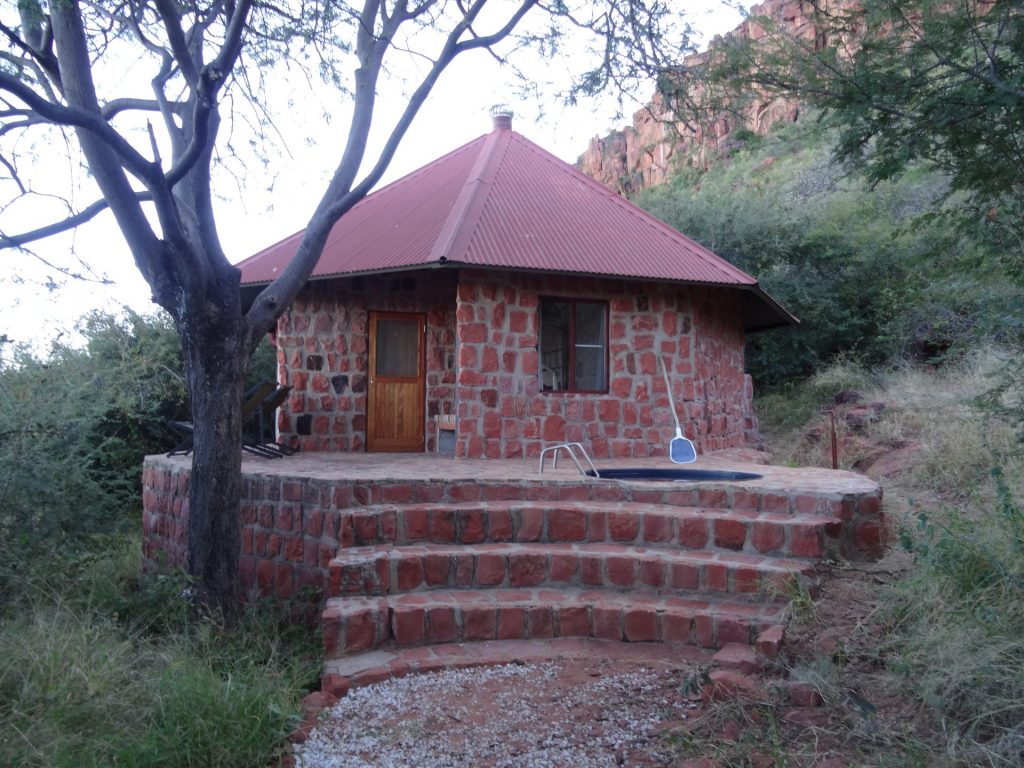We have a long 400km drive today from Okaukuejo Camp in the Etosha National Park, along a great tarmac road through the seemingly endless drama of the Namibian landscape, to Waterberg, via the peaceful and very attractive town of Otjiwarongo where we stop for fuel and supplies. By mid afternoon we’ve made the steep climb to the top of the Waterberg Plateau. Waterberg Plateau Park incorporates an almost inaccessible 60km wide, horseshoe shaped, sandstone table mountain with 250 metre high cliffs down to the savannah below. From the summit we have our first sighting of the plains of the immense Kalahari savannah which stretches for hundreds of miles into Botswana. I just want to head down there and keep going forever.
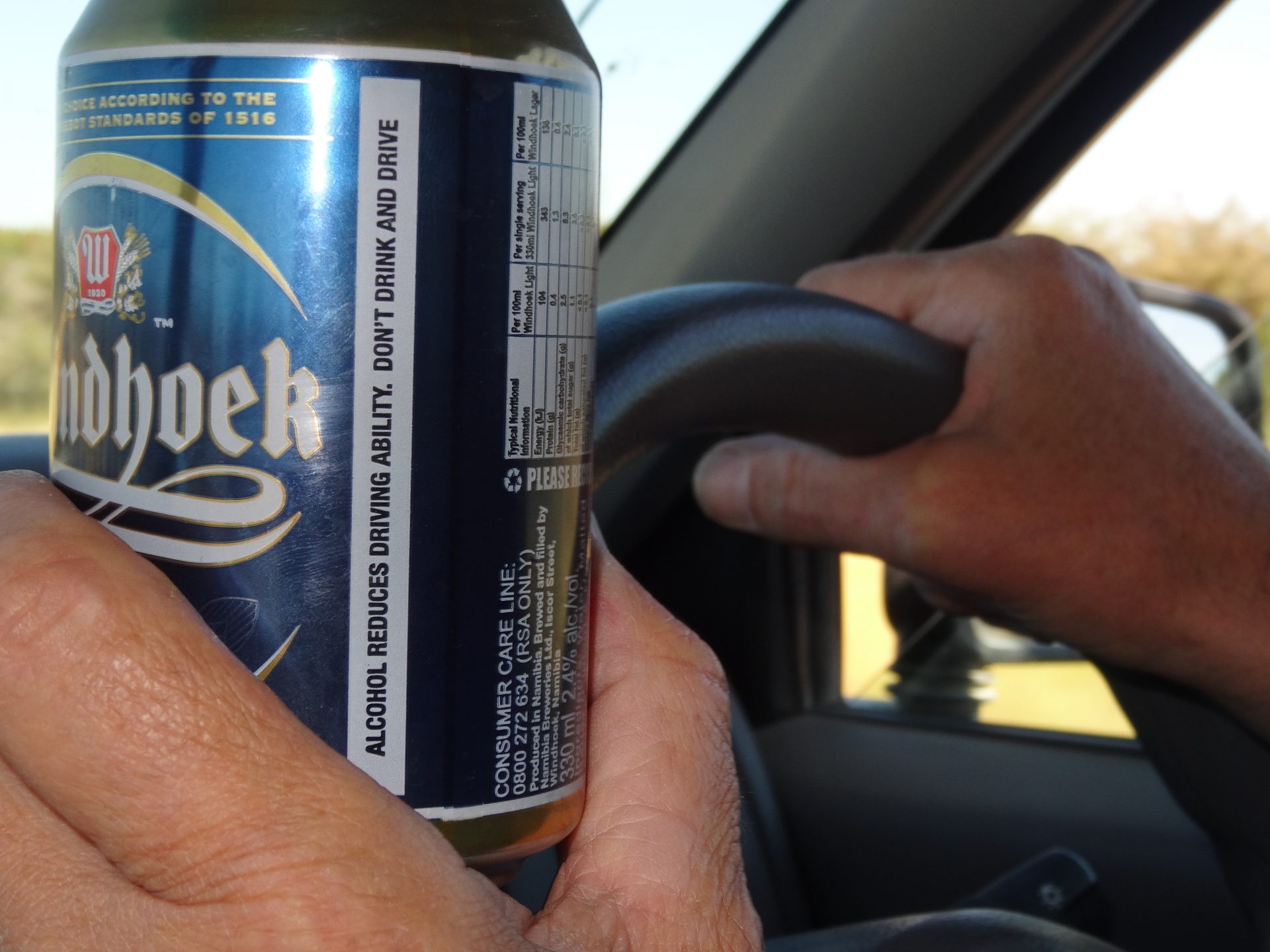
We’re staying in a private chalet built into the rocks with an endless vista out over the Kalahari. As usual it’s another beautiful cloudless day – I’m almost taking them for granted. There’s an open fireplace and a canopy over the bed. A pair of love birds are singing from a tree outside, there are dassies scampering about and I hear what I think is the occasional grunt of a baboon. I have a sense of unreality about Waterberg – it’s fantastical.
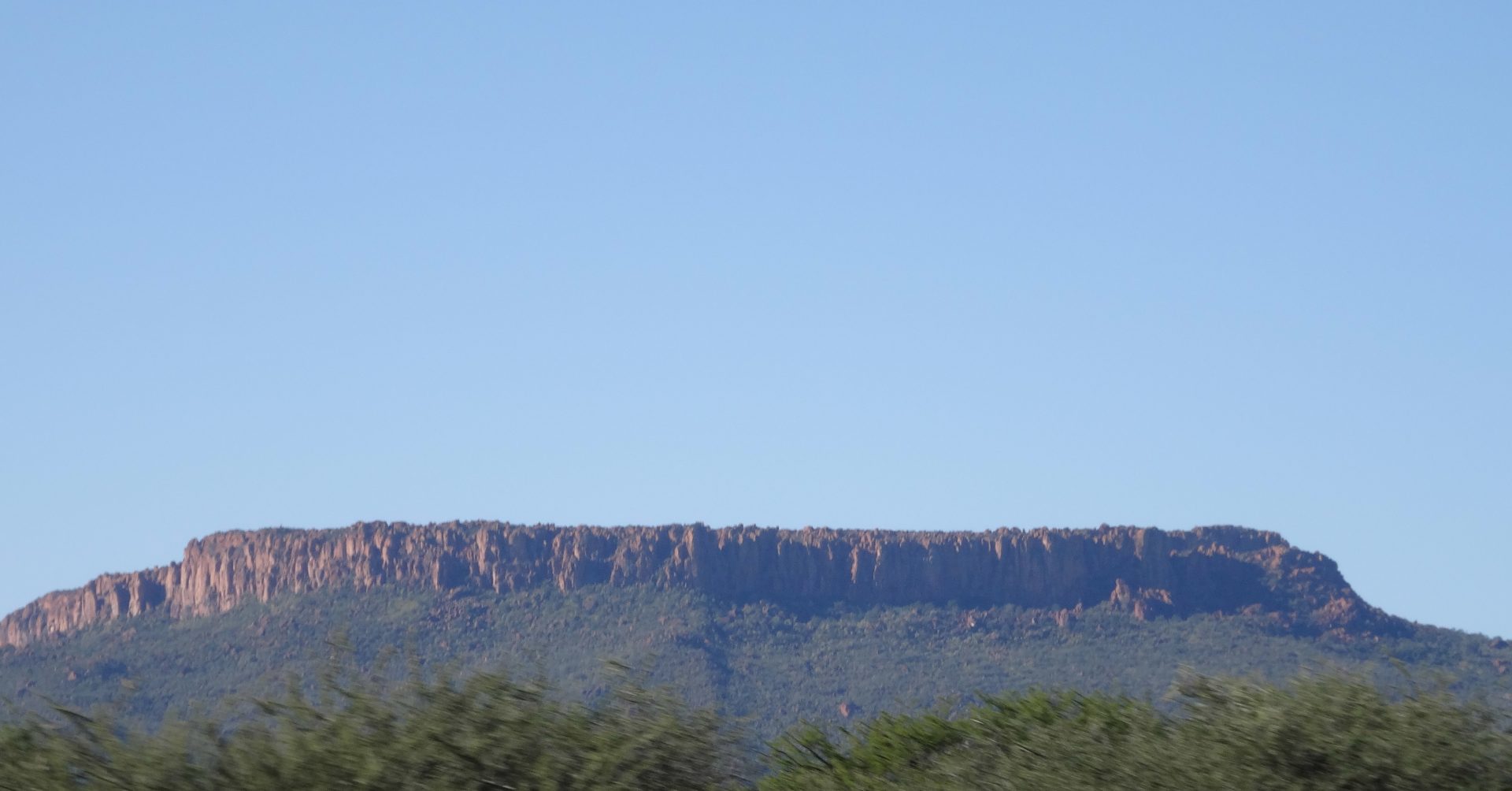
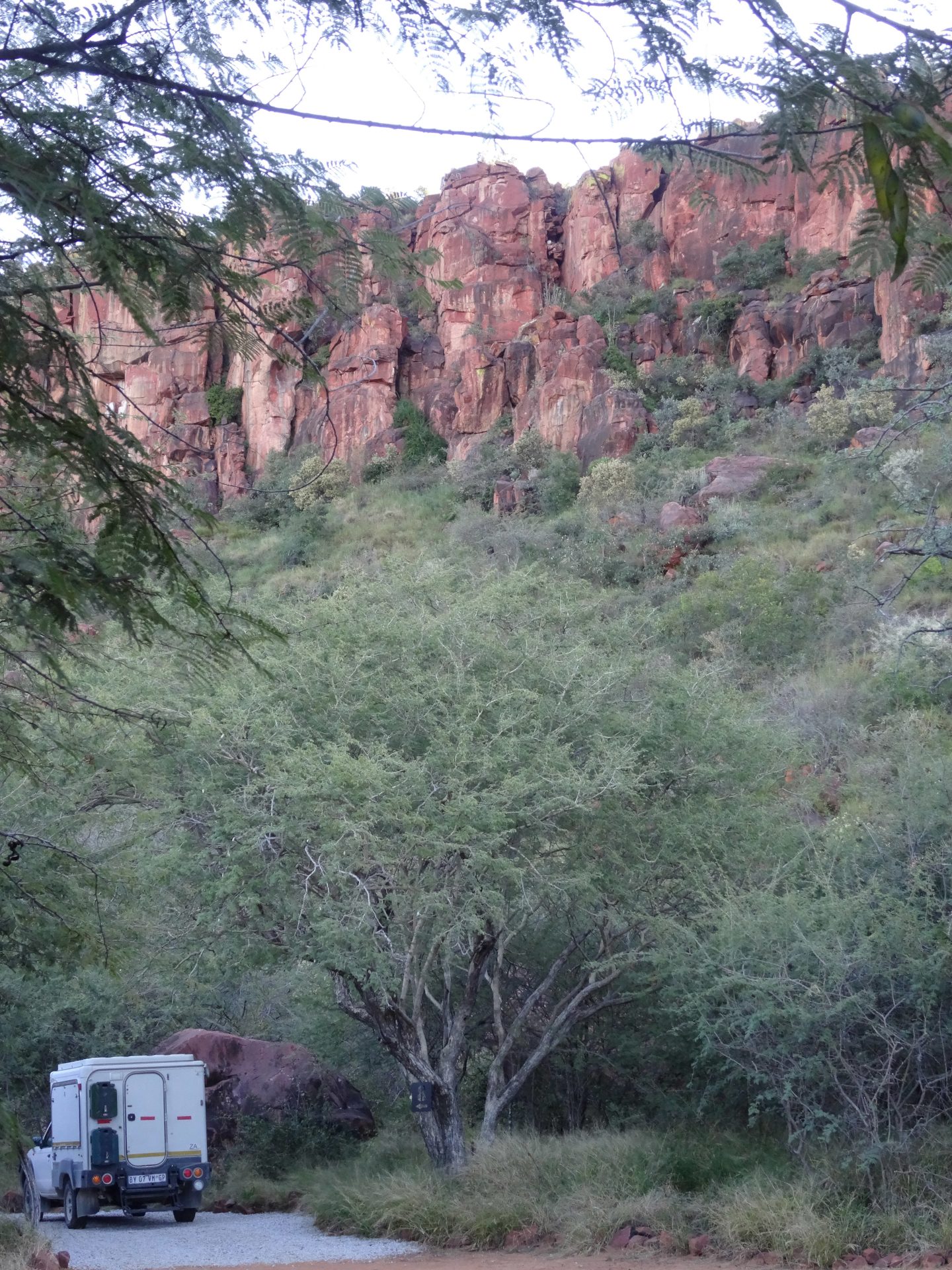
Day 16
It’s been a long day behind the wheel and I sleep like a hibernating bear. The following morning, I’m awoken by a troop of baboons scrabbling on the roof of the chalet. Jo tells me that they’ve been at it all night and that she’s had virtually no sleep. They have quite a disturbing repertoire of sounds; grunts, barks, howls, screeches and distress calls known as yaks and wahoos. I shout and they scamper briefly away. Yesterday I said something to Jo about “Bloody baboons, noisy, destructive creatures” to which she responded, “No, don’t say that, it’s lovely to see them. Everyday I see something new. it’s special for me to see them”. This morning she says, “Bloody baboons”.
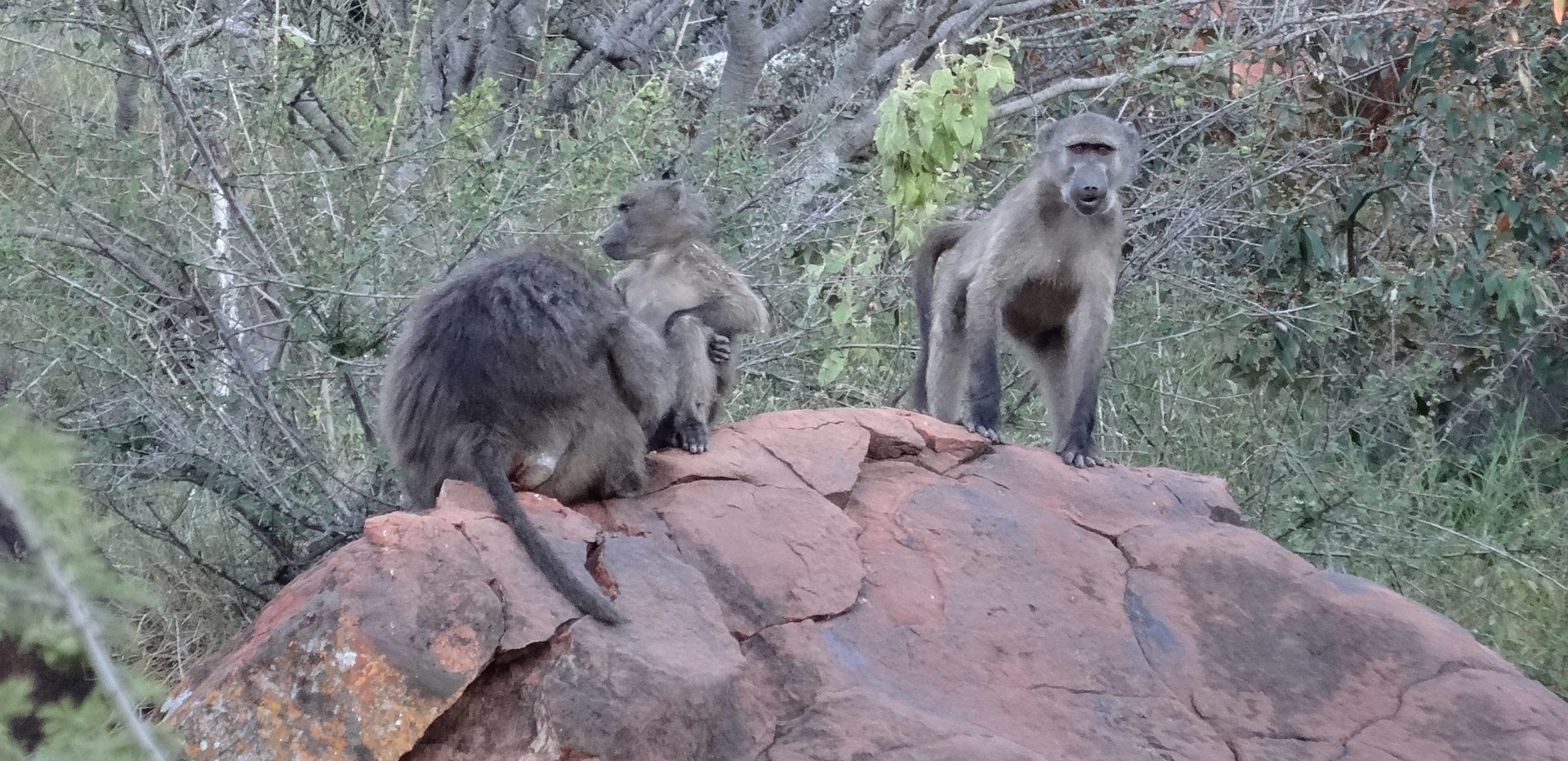
After breakfast we are introduced to Wesley, our guide, on a walking tour of the Waterberg plateau. Wesley is an Herero, an ethnic minority in Namibia and he gives us a thoughtful insight into the history of the Herero and their current plight. The history is grim. The Waterberg foothills were the site of one of the major turning points in Namibia’s history. In 1904, in the Battle of Waterberg, the Herero people lost their last fight against German Colonial forces in the Herero and Namaqua Wars. Subsequently, in the Herero and Namaqua Genocide, also referred to as the twentieth century’s first genocide, nearly 75% of the Herero people were killed in retaliation for their attempted uprising, and thousands were displaced from their land.
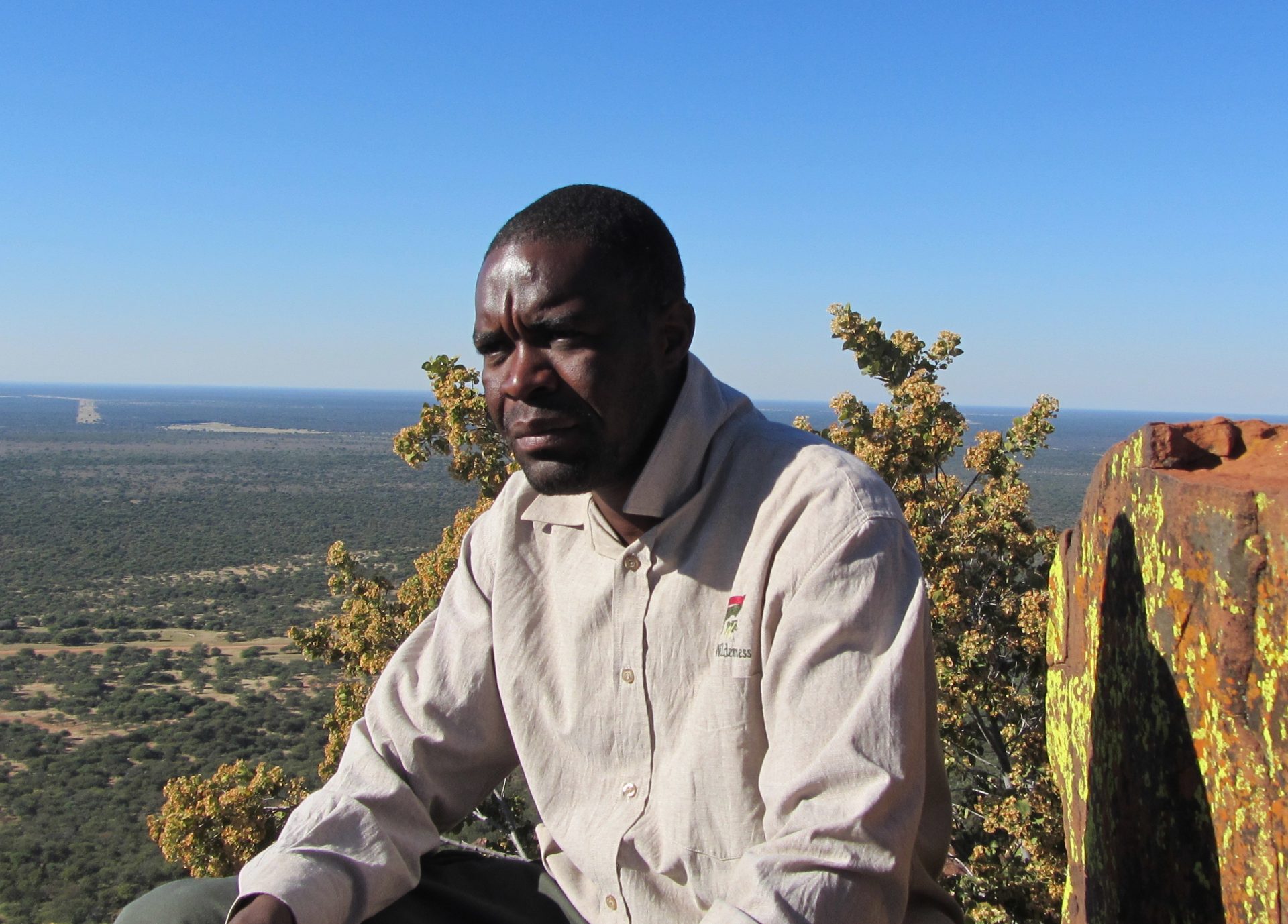
Today, the Herero are a marginalised people. Herero-populated areas, like the town of Okakarara, where Wesley lives, are less developed than other areas of Namibia, schools and hospitals are in poor condition, the roads are unpaved, and electricity is intermittent. Fifty percent of Herero households are home to an unemployed youth. From the summit of the plateau, Wesley indicates vast tracts of lush green land – white farmers land – he says. He sweeps his hand towards parched savannah – shrugs and says nothing.
The ascent up and along the plateau is a challenging scramble with long stretches over sandstone boulders. At the top, the view out over the Kalahari is even more remarkable, the curve of the earth discernible over hundreds of miles. Down behind us is the enclosed floor of the plateau, the inner horseshoe; Jurassic park, the lost world. Wesley tells us that we’ll stay on the edge of the plateau. There are water buffalo, rhino and leopards in the forest up here but they tend to keep away from the edge. Snakes are everywhere, he says enthusiastically.
Wesley stops and points to the ground. “Buffalo spoor”, he says. He tells us, devoid of expression, how mad buffalo are. “If we come across one, you must climb a tree or a big rock”, he says, followed by, “follow me, lets see if we can find it”. The contradiction of these two statements is so obvious to me that I feel it rude to challenge Wesley about them. We march on towards our doom. After twenty minutes Wesley stops. “He’s gone”, he declares, a development with which I’m very happy. Wesley tells us that the buffalo probably spent the night at the edge of the plateau and that it may have been responsible for driving the baboons crazy.

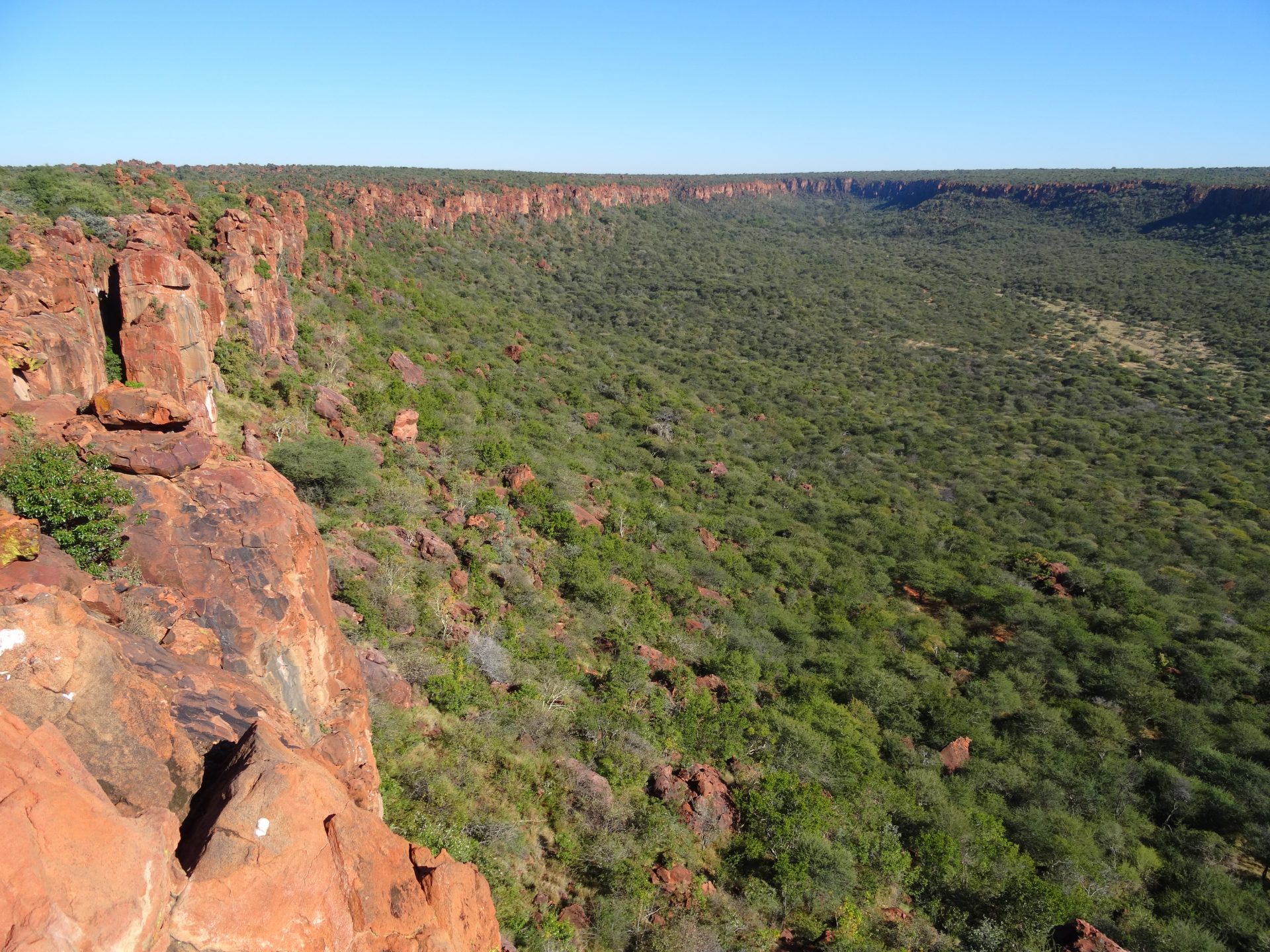
But it was fortuitous that the buffalo had chosen to wander to the plateau’s edge and deposit its droppings. It had drawn out the creature that Jo was desperately keen to see, especially as this is not the best season for them and she’d been told that she wouldn’t see one. But there it is, rolling a ball of dung, bigger than itself,; a beautiful, big, black dung beetle.
Having cleaned out the vehicle and packed for our departure, we are sunbathing in the hot early afternoon, occasionally leaping naked into the freezing plunge pool. There is still no peace at Waterberg – the dassies are squawking and screaming like frustrated toddlers. Later in the afternoon we hike the short Anderson trail to the campsite of the same name. It passes through sandy and boulder strewn terrain, some of it densely enclosed by shrubs and trees. Jo is a little disconcerted, thinking of all the snakes, scorpions and spiders that we might come across. I certainly don’t help by saying how disappointed I am that we haven’t seen a snake. This usually has the effect of conjuring them up from somewhere! Regrettably, no snakes, but we do come across some enormous webs across the trail, in which linger equally enormous hairy spiders. As we near home, Jo wanders off the trail to look at a watercourse, and I immediately spot a petite Dik-dik antelope, one of the world’s smallest antelopes. It darts swiftly into the undergrowth. Jo is terribly disappointed not to see it – she’d read about them when she was a child in a favourite animal encyclopaedia. Back at the chalet, we discuss what we might do on our last evening in Namibia. Jo looks out across the Kalahari at the twinkly lights of the Herero town of Okakarara. “Let’s go visit Okakarara, it’s only only over there” she says. We refer to the map and unfortunately “only over there ” is a 150km return trip of indifferent roads.
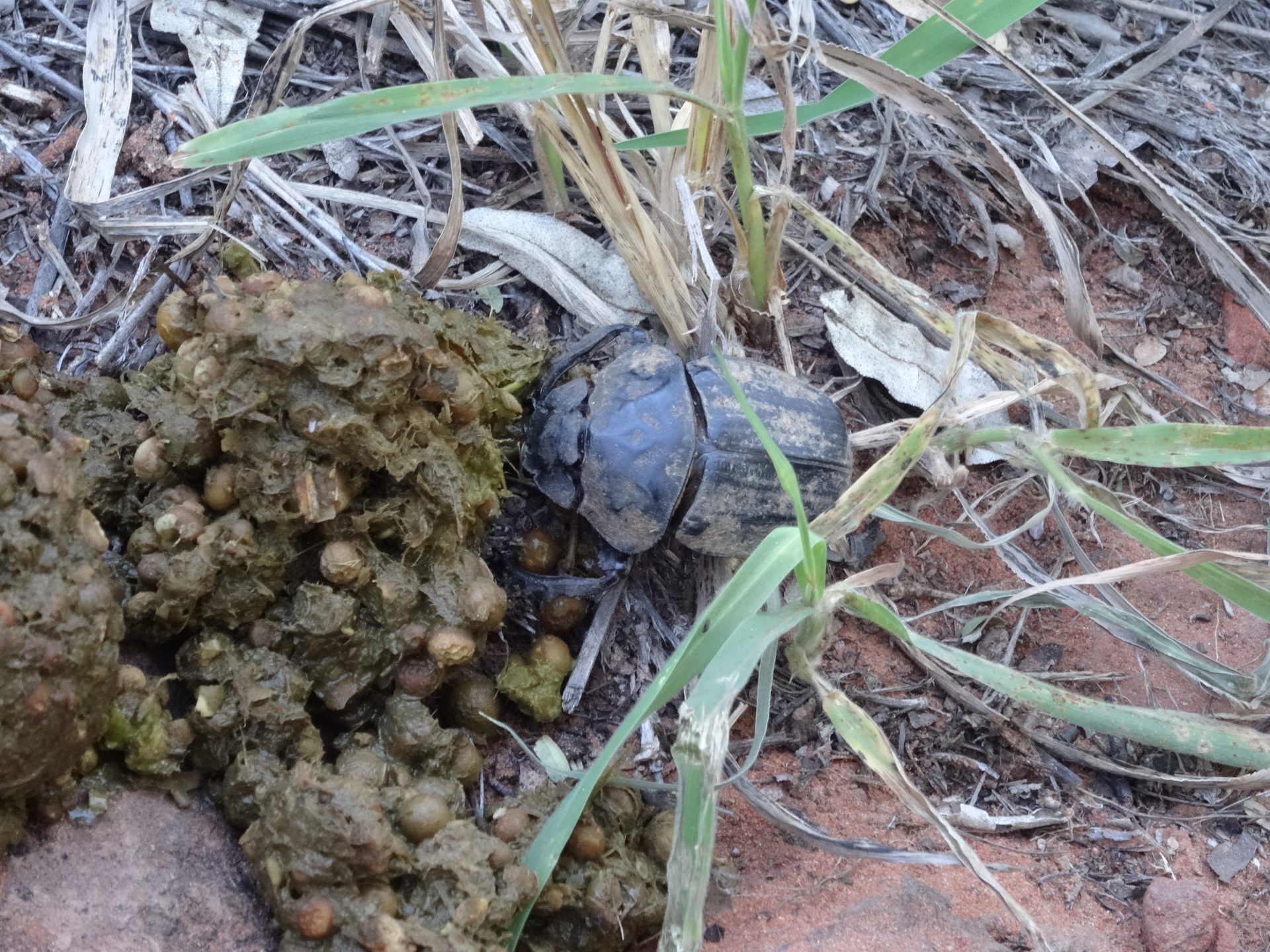
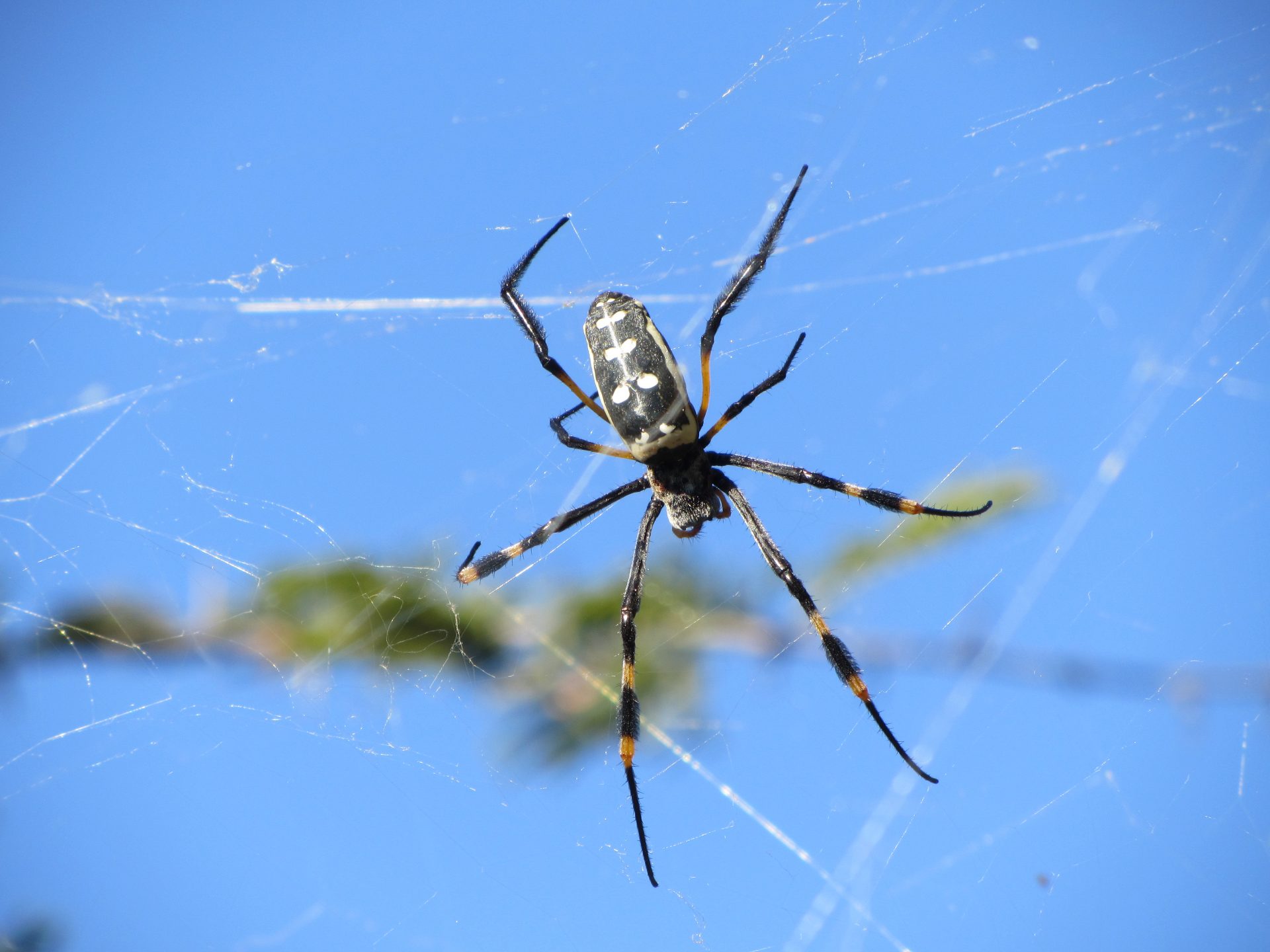
Day 17
This cannot be, it’s too soon, our final day in Namibia. We’re up early again at 6am. Jo’s had a better night, the baboons only barking occasionally. For the first hour of the day, she is uncharacteristically quiet, perhaps contemplating our return to the trials of life in England.
I’ve been suffering with a painful shoulder the past couple of days, and as we have a 350 km drive to the airport today, I don’t want to do much else. But Jo suggests we do a one hour walk before departing – she’s hoping she might see that elusive Dik-dik. There’s a short trail to a spring from the nearby Wilderness lodge; a beautiful, lush and shaded lodge surrounded by gigantic bamboo canes and, despite not having the view of the Kalahari, the chalets have a serene sense about them. Instead of walking up the plateau cliffs, our trail is a flat, grassy path surrounded by cliff walls which gradually encroach upon it.

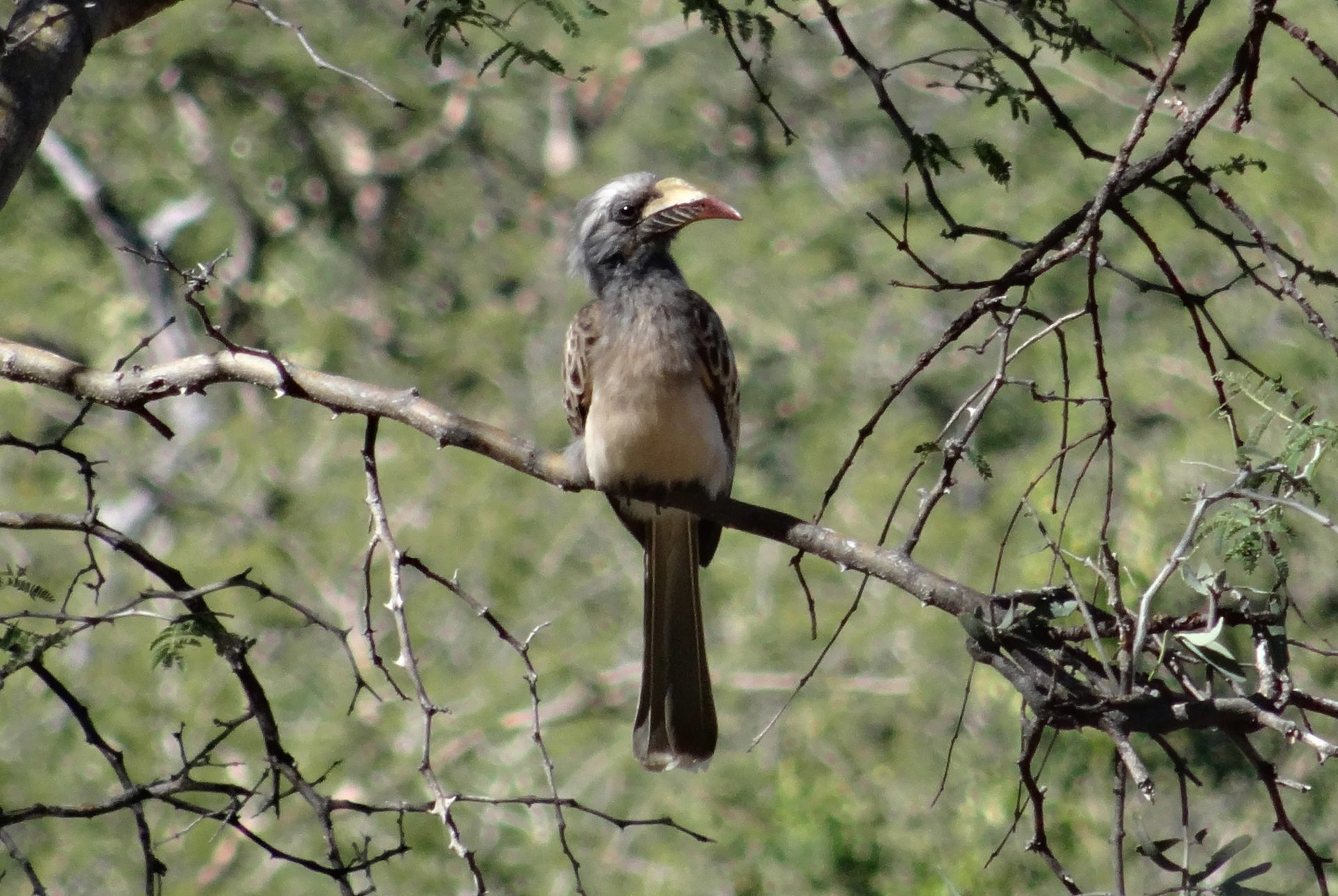
In a place like this it’s great just to stop amongst the trees, throw your head back, face the warm dappled sunlight and listen to the cacophony. Stay here a good while, be patient, then look around at what you’ve just heard. Look down on the ground and into the trees; there’s a coloured caterpillar as big as your forefinger, crickets, grasshoppers and stick insects, ants, solitary and in serried ranks, lizards, butterflies the number of which you haven’t seen since you were a child, flies, mosquitos, wasps, spiders, tree beetles and ground beetles; all shapes, sizes and colours, termites; judging from the thousands of termite hills there must be trillions of them. In size, diversity and number, Africa has a dazzling abundance of animal life.
The spring is surrounded by big ancient trees smothered in spider’s webs. Kudu are grazing in the shade. Yesterday, we were looking down onto the lost world of the Waterberg, today we are walking through it. Unfortunately for Jo though, no Dik-dik.

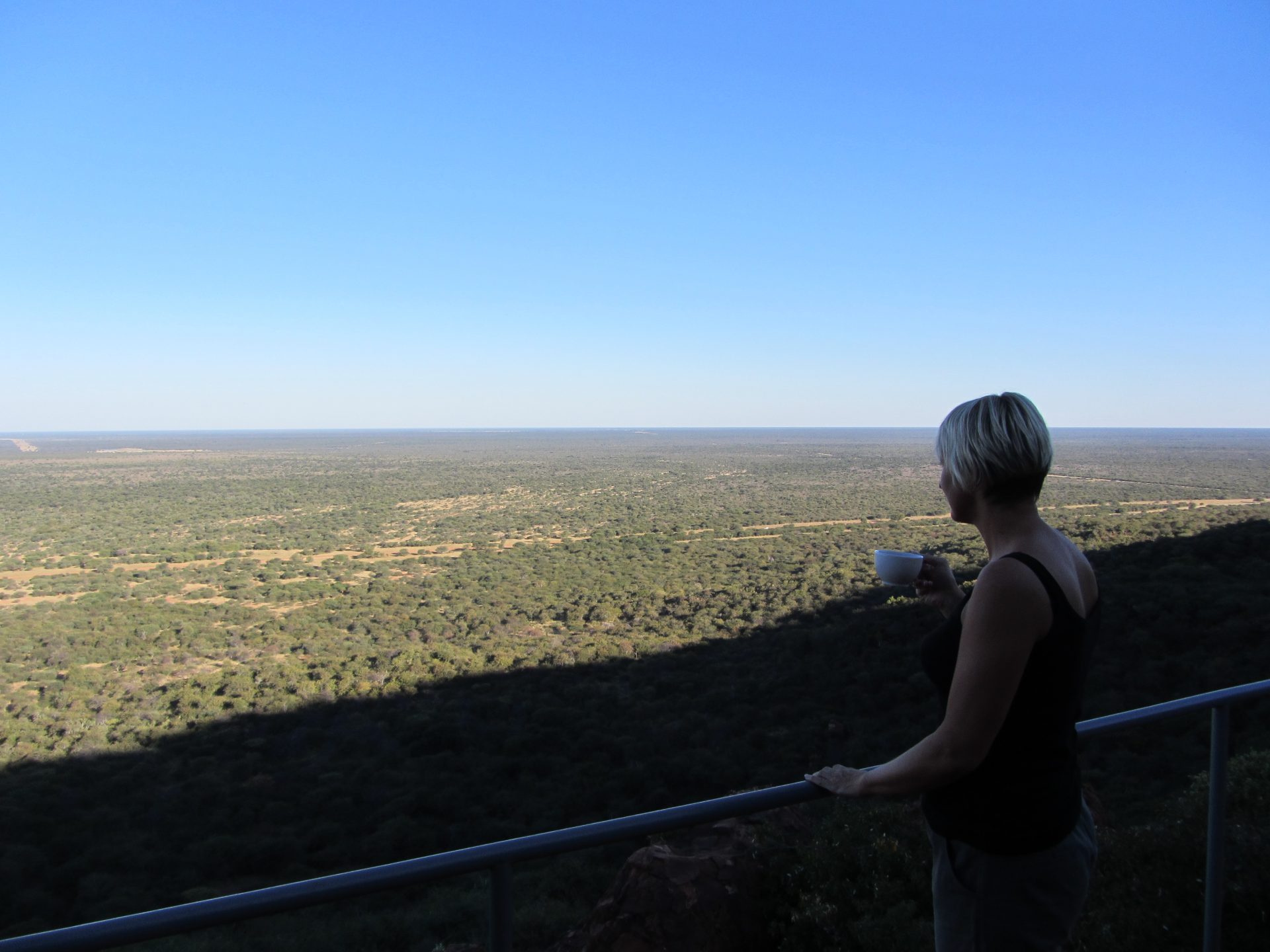
Like every other journey in Namibia, the drive to the airport is very quiet. After Mount Etjo, the long straight road continues through grassland dotted with many termite mounds. We’re racing along the tarmac road, spotting the occasional warthog, ostrich and vulture, when a vehicle draws up alongside, the driver gesticulating urgently at me and pointing to Sputnik’s roof. I pull over and get out to see that the camper roof has popped up. We’re lucky the whole thing wasn’t ripped off and dumped in the bush, or worse, that Sputnik itself wasn’t propelled off the road. Those damned clips that I’d bent with pliers to get them open, now don’t close properly. I secure them with duct tape (always travel with duct tape), and hold the roof down internally by securing it to our heavy suitcases using the suitcase straps. Sputnik can now limp back to earth!
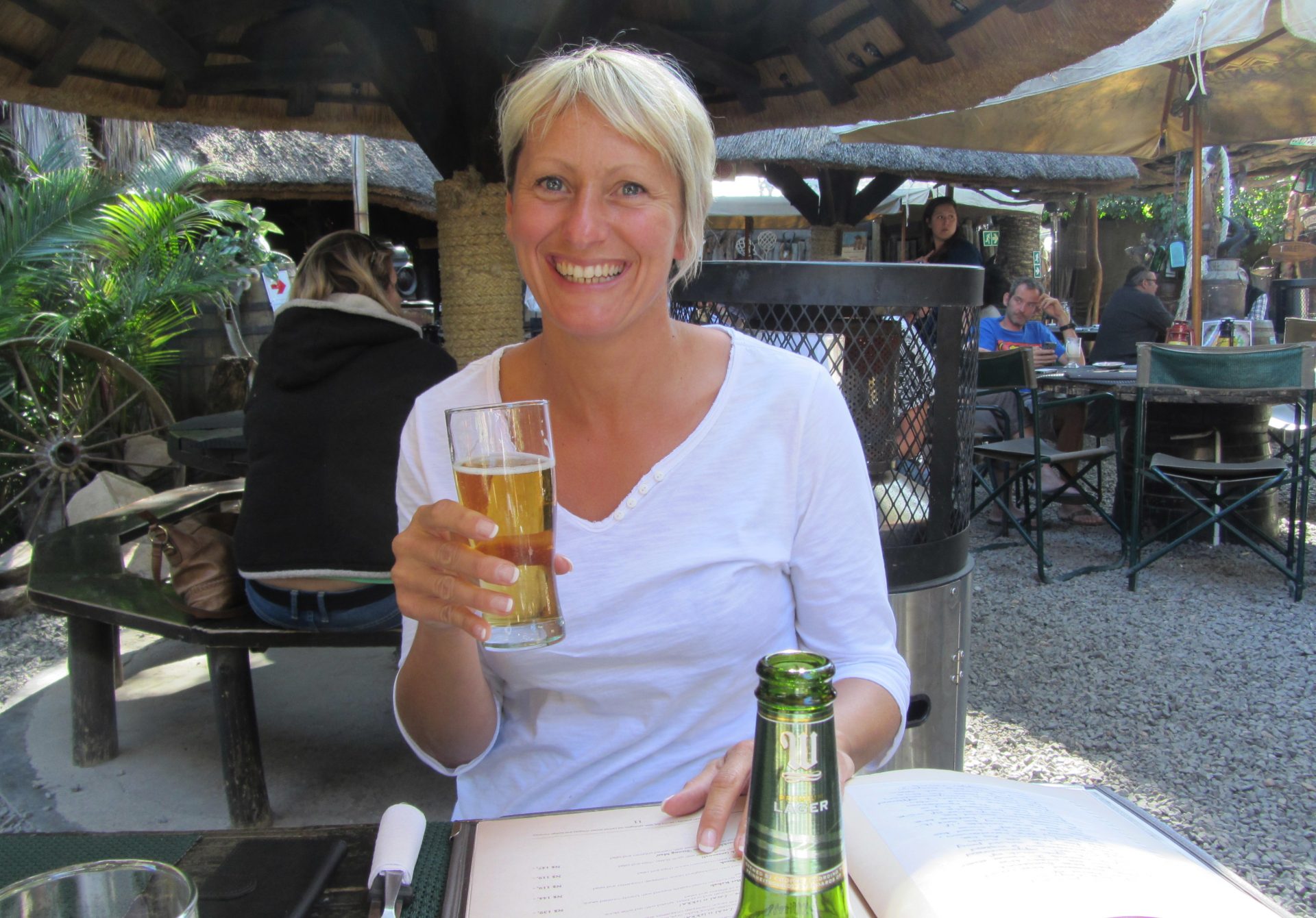
At Windhoek, we have time for a fine lunch at the appropriately named Joe’s Beerhouse, an hospitable and quirky bar and restaurant, full of safari props under a thatched roof. It’s busy during the day and I sense it could be rowdy and full of the fun loving young crowd in the evenings. A few beers, an Amarula, a baboti for Jo, and a burger for me. A lekker way to end our trip.
Fortunately, Jo has made copious notes in optimistic preparation for our return journey. We’ll be back.
Total distance – 3388km
Total cost – £6,250 including flights, vehicle, accommodation, food, guides, fuel and all Sputnik expenses


